Claire visits cocoa plantations in Madagascar: Blog #2
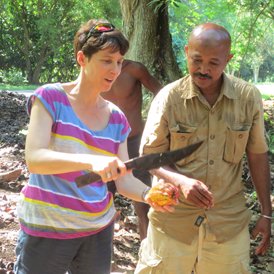
Claire visits cocoa plantations in Sambirano Madagascar: Blog #2
I have just returned from an amazing trip to Madagascar - read Blog #1 to find out more about Chocolaterie Robert, the Malagasy-owned chocolate business I was visiting, the principle of RAISETRADE & Antananarivo, the capital of Madagascar where the Robert factory is based....
So let's talk about growing & harvesting cocoa!
You may have heard of Madagascan cocoa from the Sambirano valley & that is because this is the area where all Madagascan cocoa comes from. Cocoa is not indigenous to Madagascar (it comes from Venezuela & northern reaches of the Amazon in South America), and was introduced into Madagascar in 1822, which quite late compared to other equatorial countries. Madagascar's first cocoa trees came from Reunion island, which itself was colonised with criollo cocoa from Java in 1777. The Dutch introduced Venezuelan criollo cocoa to Java as far back as 1560! Cocoa was initially planted in the rainforests on the East coast of Madagascar, but that area suffers from regular cyclones & is also too wet in the rainy season.
Sambirano by contrast is in the NW of the island & the plantations start in the delta area by the ocean, complete with ecologically very important mangrove swamps, & follow the Sambirano river inland. The delta is very important to the cultivation of cocoa in the area as it ensures a good water table, as ironically, the area is a bit on the dry side for cocoa.
Madagascar is also one of the smallest cocoa producing nations globally, compared to the giants of Ivory Coast & Ghana in West Africa, producing c7,000 tonnes of cocoa per year which represents just 0.15% of total world cocoa production.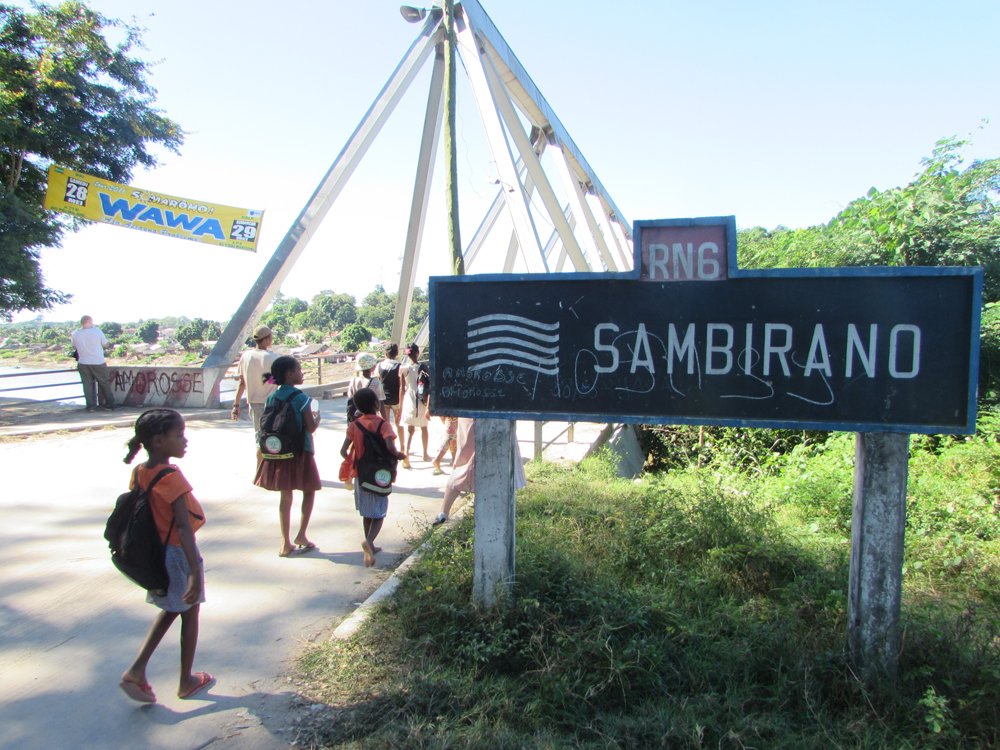
The first plantation we visited was the MAVA plantation recently bought by The Ramanandraibe family, who own Chocolaterie Robert, after 20+ years in Government hands....and it has suffered from lack of investment in that time as a result. This plantation of 1700 hectares, of which only c600 is for cocoa, is actually made up of 8 farms spread out over a 40km area from the delta area to inland. MAVA's neighbours are the Millot plantation owned by Valrhona (a very famous French chocolate company, exporting dried beans for processing in France) & Ackessons, also European-owned & exporting the beans for processing in Europe....you get the idea. By the way, all these plantations were established at the beginning of the 20th century by French colonialists, Millot & Guy de la Motte St Pierre, with a nose for a good climate for growing cocoa.
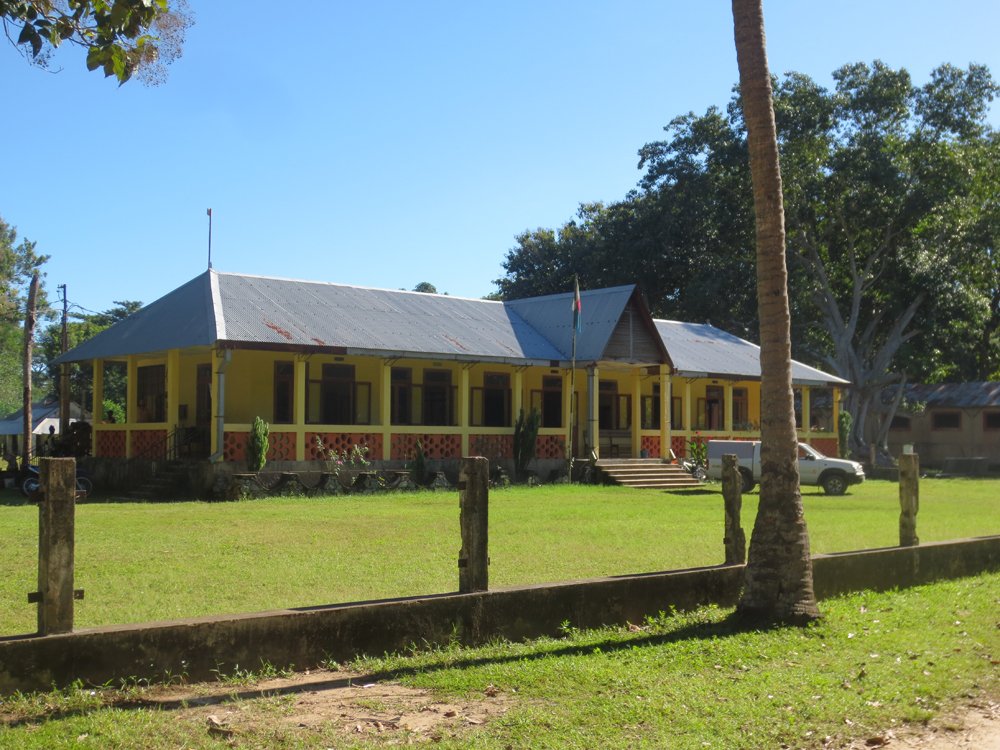
We met Thomas the plantation manager, a French agronomist who has been living in Madagascar for 7 years, has a Malagasy family & is passionate about fine cocoa and bringing the plantation back to its former glory. Thomas believes that Madagascan cocoa is truly unique and wants to protect it by not introducing in any new strains from other cocoa producing countries, which may bring disease and contamination with them. He describes Madagascar as "Cocoa Paradise" due to its isolation, its terroir (which influences the flavour) and the unique grand cru cocoa that has developed over time.
He is determined to expand the capacity of the plantation to grow the finest cocoa, which they will select from the best quality trees that they have currently, over the next 5-10 years. I would love to go back in c 5 years time to see how it has changed!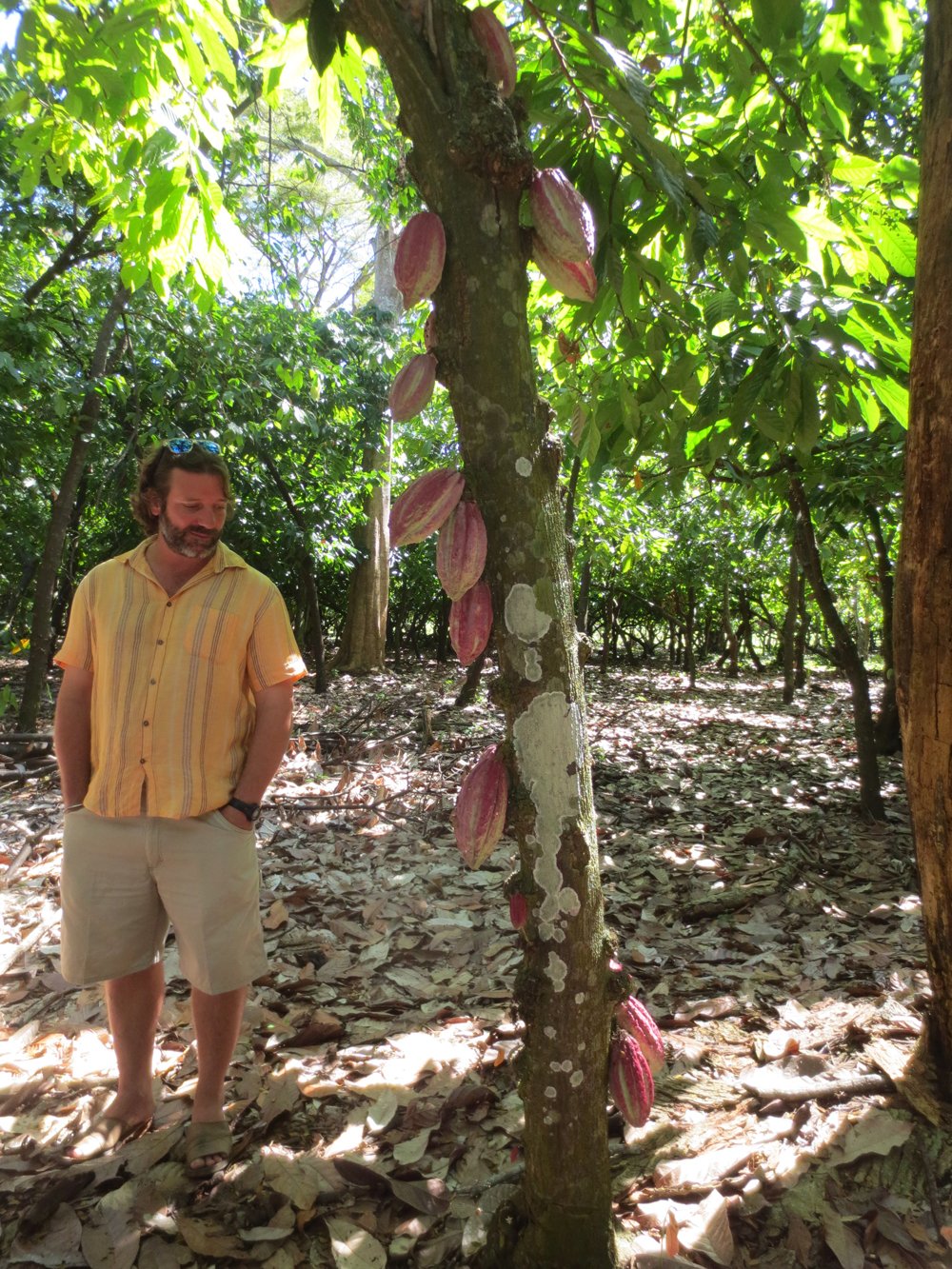
And yes, Thomas is standing next to a perfect example of a cocoa tree with a lot of pods nearly ready for picking
Cocoa trees take 4-5 years to reach maturity to start producing cocoa pods. As you can see from the photo, they are small trees that need a lot of shade, especially when they are young trees, so are in plantations protected with larger shade trees around them. The floor of the plantation is covered in cocoa leaves as you can see from the photo & makes a marvellous crunching noise as you walk through it. It is also perfect cover for lizards, chameleons & even snakes that we saw as we walked around!
Although the cocoa grown on the MAVA plantation does not have organic certification, the cocoa is grown organically - the leaves & empty pod shells act as mulch and if they use any fertiliser, it is manure from local zebu cattle (which are used for transport & meat).
Cocoa trees are very distinctive in that the pods grow up the trunks of the trees as well as along the branches & a very productive tree can have up to 200 pods at different stages of maturity growing on the tree at any one time. It takes about 6 months from flower to ripe pod and the trees are fruiting all the time, but the main harvesting seasons for cocoa are in December and again in late May/early June.
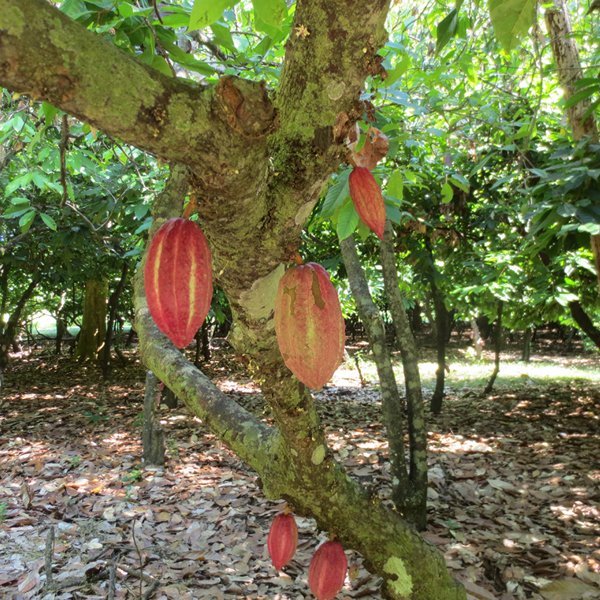
Cocoa likes constant heat, shade & good rainfall - but not too much - Thomas amused me highly when describing how fussy cocoa trees are as, when I am running workshops or tastings, I liken chocolate to a high maintenance woman as it is equally fussy to work with as a finished product!
By the way, on a slightly tangential note, meet the combava fruit bush - Combava fruit looks like a knobbly lime, tastes pretty similar to kaffir lime but it has thorns. It is being planted around the cocoa plantations as a natural barrier to prevent the local zebu cattle from rubbing themselves against the cocoa trees & destroying the ability of the tree to grow pods off the trunk.
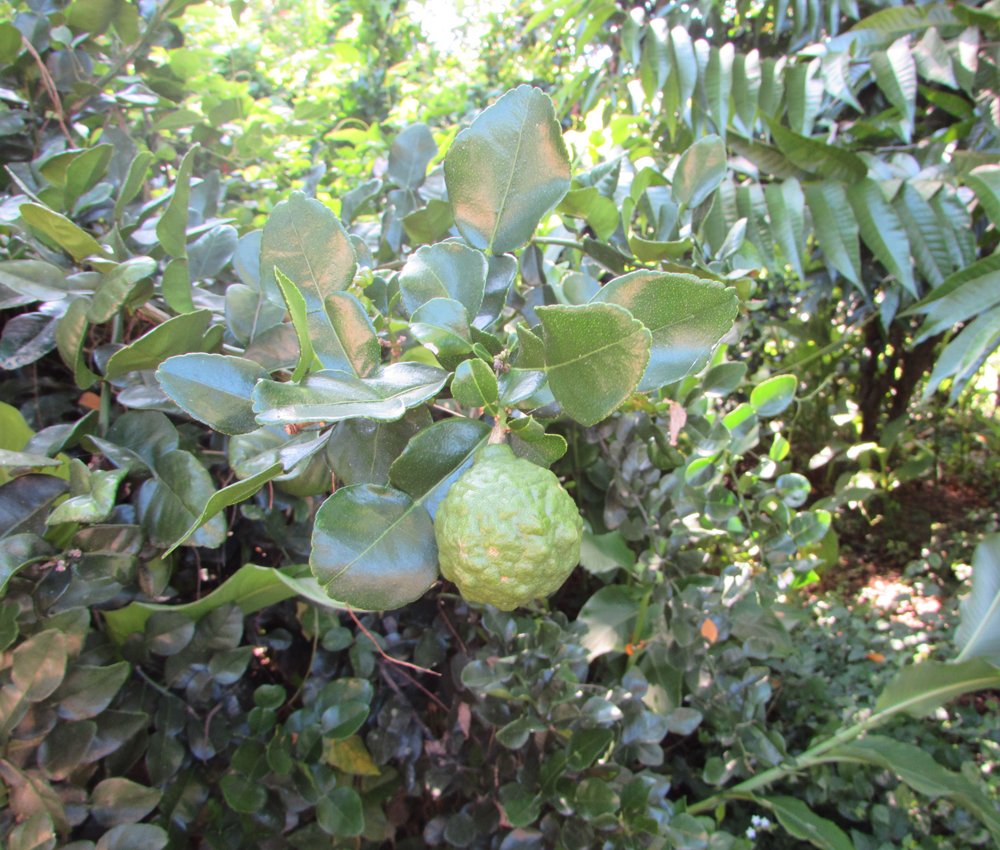
So how do you harvest cocoa? Every pod is cut of the tree by hand - either using a knife (on a long handle for the higher pods), or by twisting the pod off the trunk - if you just pull it off you will damage the tree. It is a totally manual process, as is cutting open every pod to scoop out the wet beans inside.
This is the part of a cocoa pod which surprises people the most as the cocoa beans inside are covered in a (rather delicious) citrussy, yet sweet flesh or "mucilage" to give it its technical title. Don't they look like garlic cloves at this stage too?! These photos were taken at the 2nd, organically certified, plantation we visited managed by Mr Julien who was very enthusiastic but only spoke French and got us all opening cocoa pods with machetes (!)...it is much harder than they made it look to cut through the very thick shell surrounding the beans nestled inside.
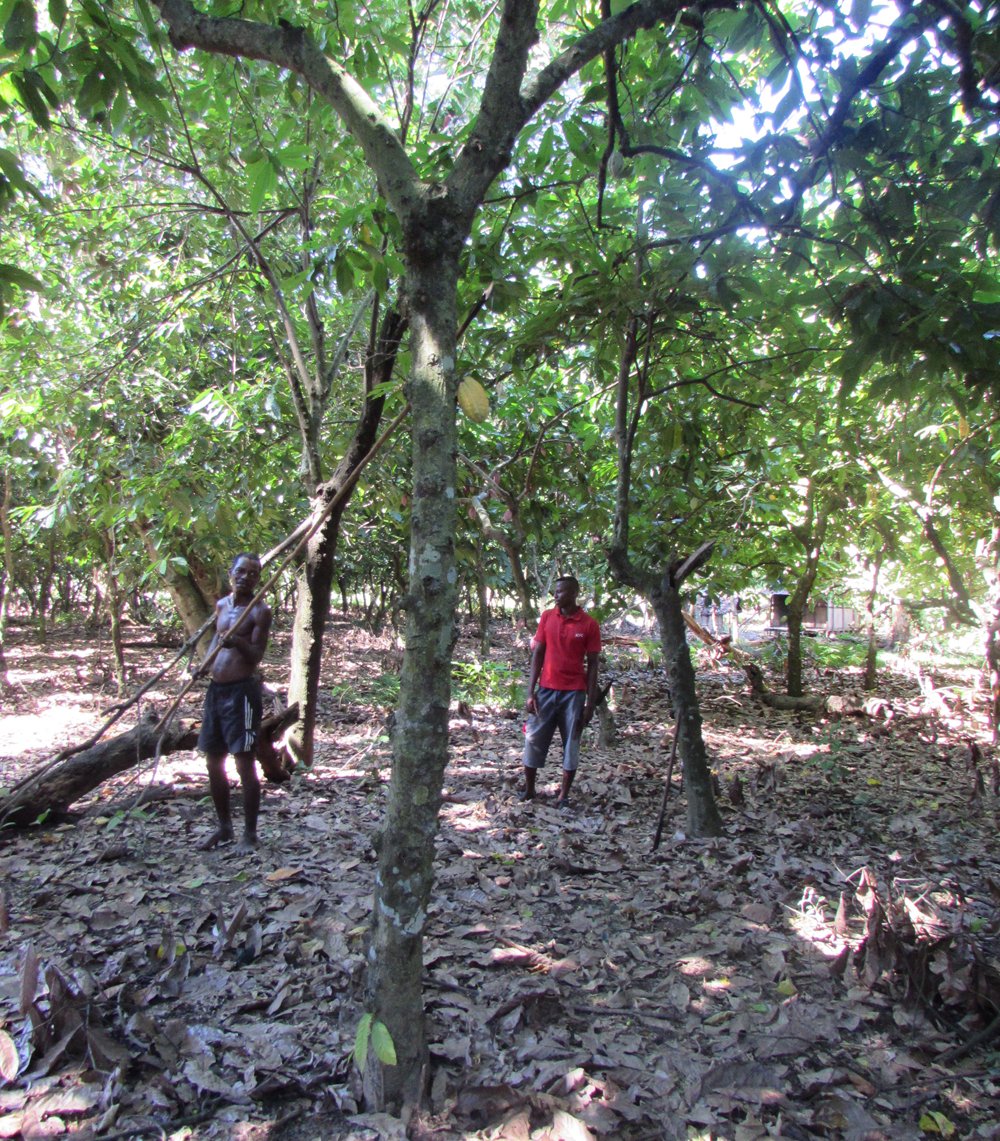
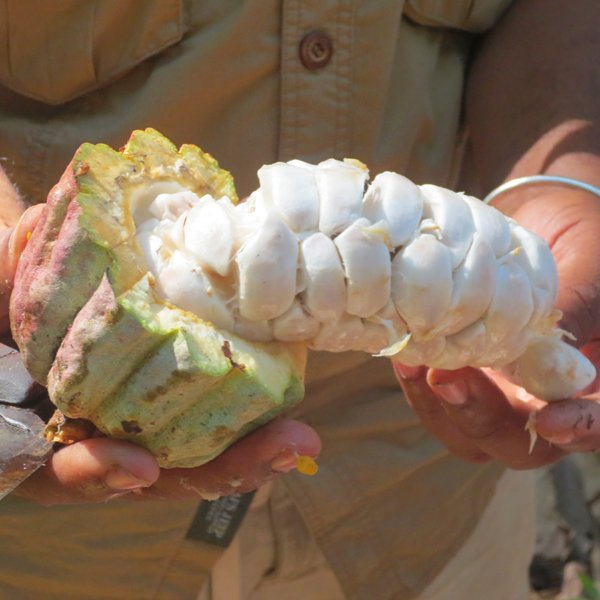
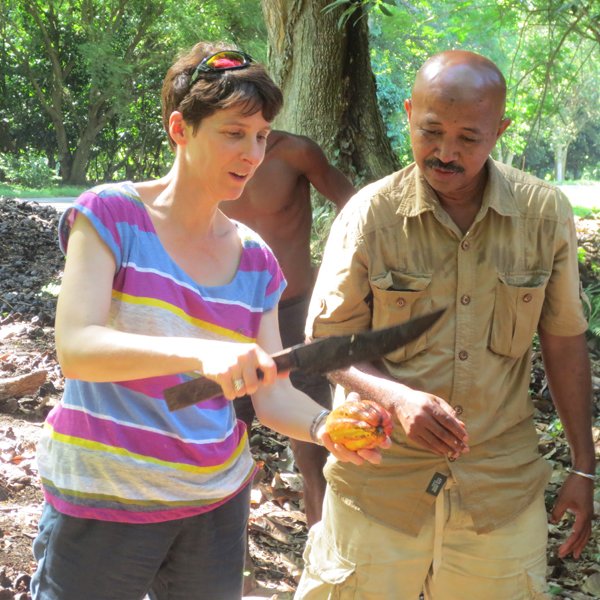
By the way, cocoa farmers will often suck the flesh of the beans whilst scooping out the pods & then add the sucked beans to the bucket! (that is completely ok to do as the beans will then go through a fermentation & drying process).
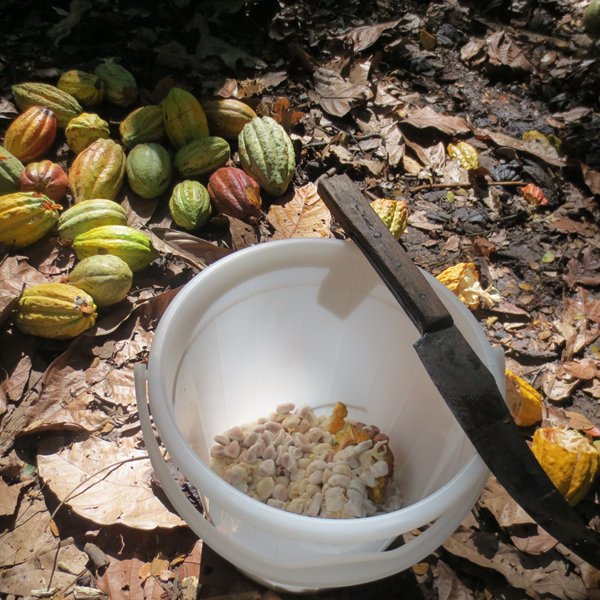
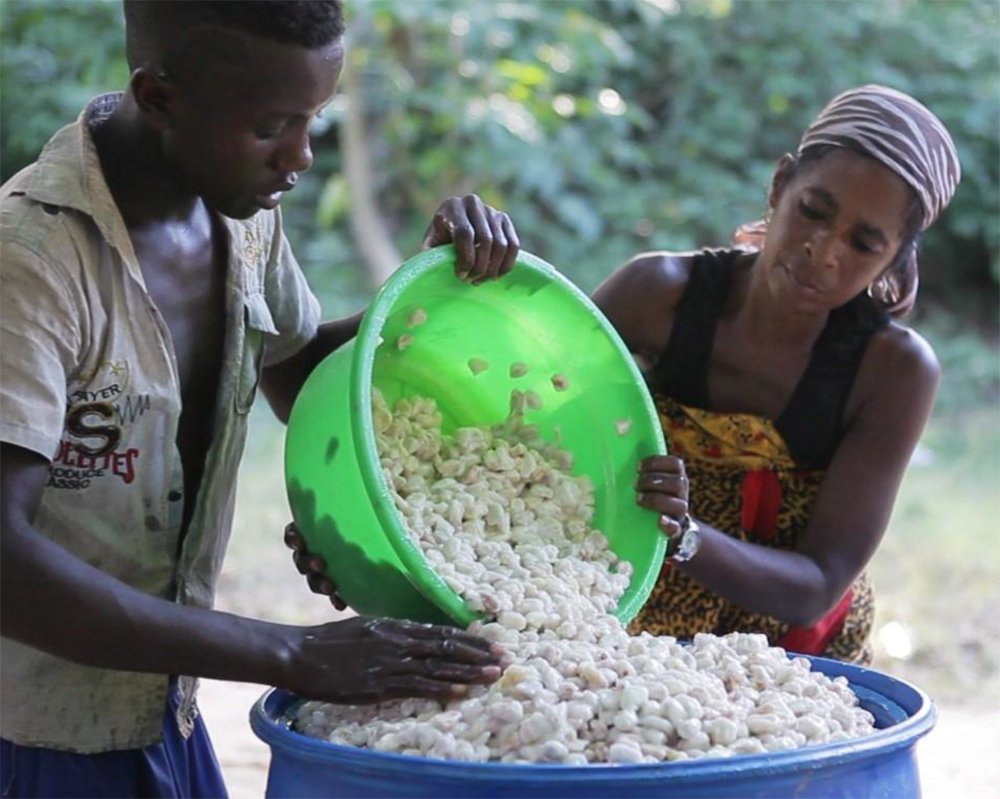
At this stage, the raw beans are totally inedible and are not what you might expect in colour either - Madagascan cocoa has evolved into a unique blend grand cru of cocoa types from those trees brought in by those colonialists....it is a glorious "melange" as Thomas would say of the finest "criollo" cocoa, fine flavoured "trinitario" and the more robust genus, "forestero".
As a general principle, criollo beans are the most highly prized by fine chocolatiers as they produce chocolate with the finest flavours and have a good balance of acidity. However, criollo is also the most delicate & often doesnt produce the highest yields. Trinitario is a more robust, yet highly prized, hybrid of criollo & forestero & there are many, many different variations of trinitario - most fine flavour cocoa from around the world will be a type of trinitario, all with their different flavour profiles based on the cocoa genus & also the terroir in which the cocoa is grown. Forestero is the preferred type of tree grown in west africa for bulk cocoa production to be turned into industrial chocolate by the multinational chocolate companies, as it grows the fastest & has the highest yields but is the least fine in terms of flavour with higher levels of acidity.
To the untrained eye, cocoa pods just look like an amazing myriad of colours & shapes but the experts can tell what type of tree they have by the size & "knobbliness" of the pods - the smoother & more ball-shaped the pods, the more likely the tree is to be a forestero, the more ridged the pod, the more likely it is to be trinitario or criollo. You can see from the pile of freshly picked pods, the differences in shapes, textures & colours - what a wonderful feast for the eye.
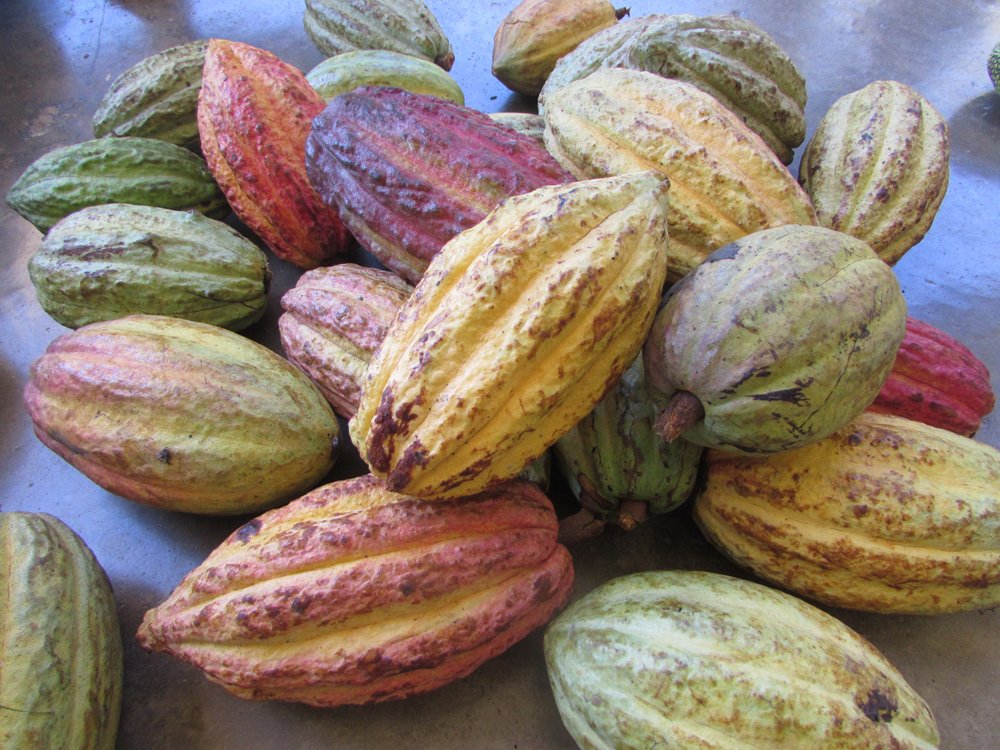
If a tree is more of a forestero, the beans are a dark purple, if it is more of a trinitario, the beans inside will be a paler purple & if it is a pure criollo, the beans are white.....and yes we opened several different pods and found these different coloured beans inside - we even found one pod had both purple & white beans inside the same pod - see the pod & cut open beans on the far right. A bit like having non-identical twins!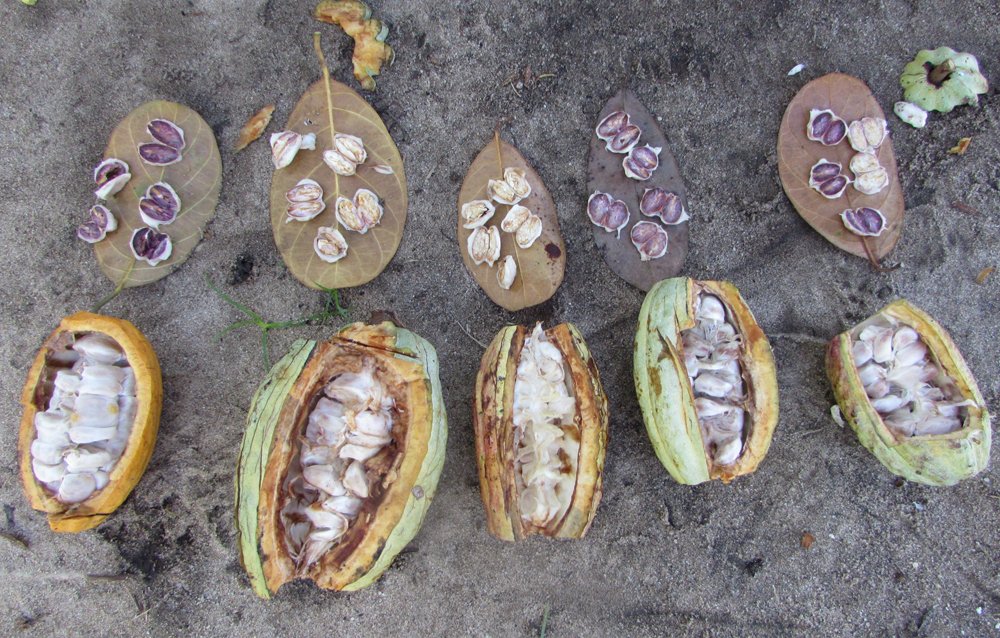
Back to processing those wet beans....the first stage of cocoa processing is to ferment the beans in a set of fermentation bins over 6 days. This process is key to the development of the flavours of fine chocolate - if you dont ferment the beans properly, they will make very acidic chocolate. The beans are packed in the top box for 48 hours & covered with banana leaves & jute as they need to be in an anaerobic environment to start fermentation - in this process, the white flesh drips away & chemical changes start to take place inside the beans - the smell is also quite alcoholic, not something you associate with chocolate!
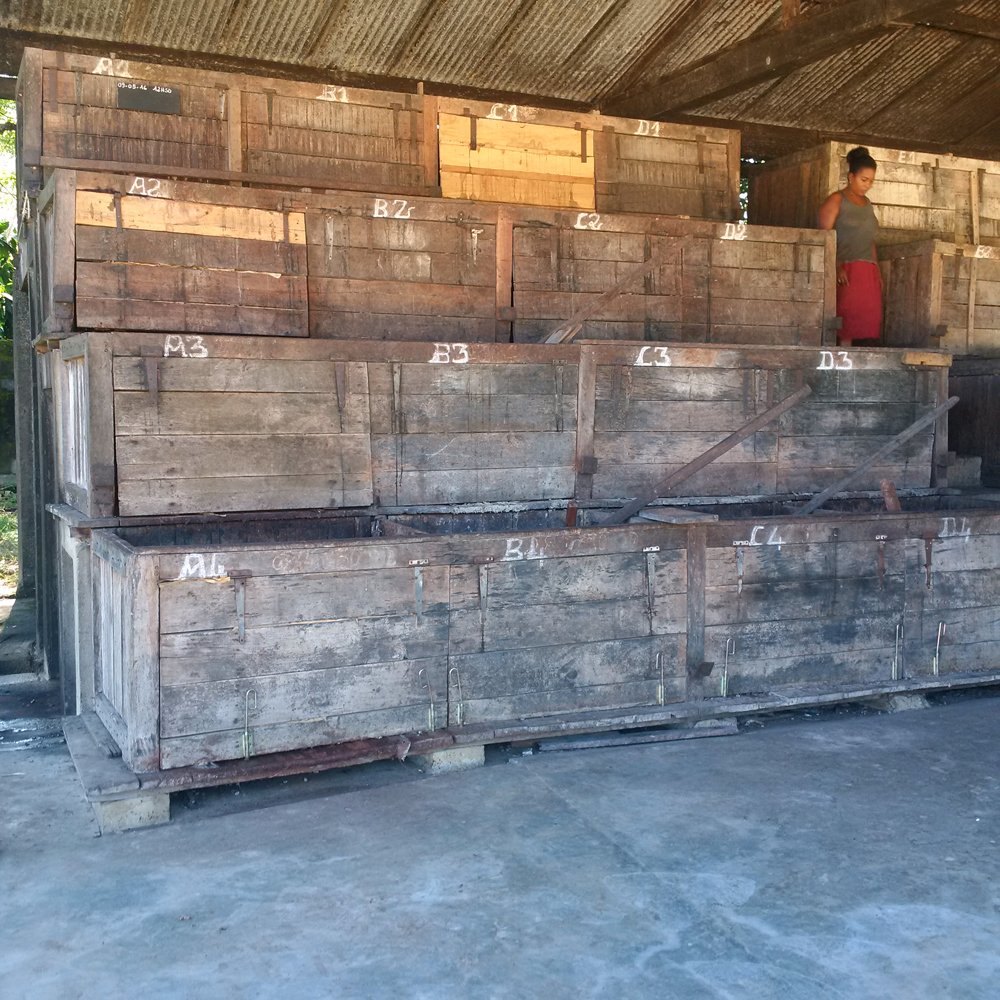
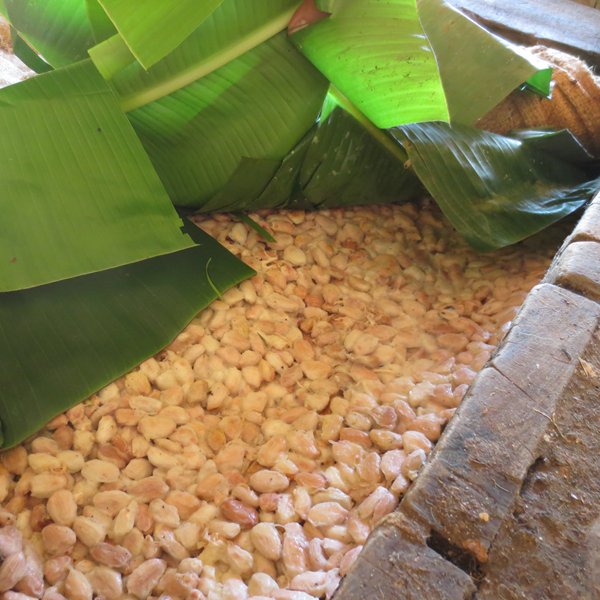
They then move down to the next 2 boxes for 24 hours each to move the beans around & introduce oxygen. It is important for the beans to be moved around between each box to ensure even fermentation and heat distribution. They are then in the final box for another 48 hours - by this point the beans are a sticky brown colour & smell of vinegar.
By the way, the fermentation process takes the temperature of the beans up to 50 degrees -well above any temperatures dictated by products legally defined as "raw"......so, cocoa powders & cocoa butters & chocolate sold commercially as "raw" are technically not so. It is impossible to create truly raw chocolate products unless they are made with unfermented beans and I would certainly not advise eating any unfermented chocolate!
Enough of the rant about the abuse of the word "raw" - onto the next stage of cocoa processing....drying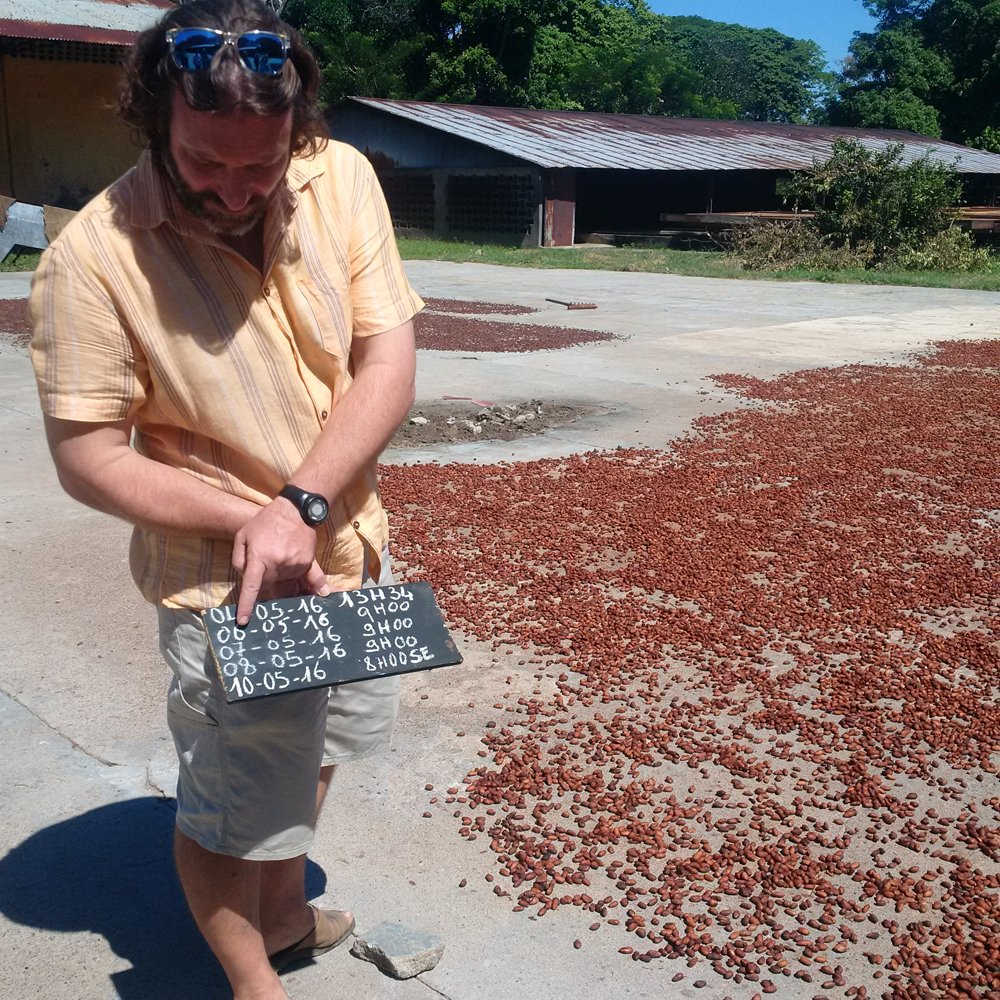
Initially, the beans are laid out to dry on concrete for 3 hours after fermentation to dry out the shells (& boy do they smell of vinegar at this stage) but if dried any longer on concrete, the shells would dry too fast vs the insides of the beans, so then they are moved onto wooden racks on wheels, so that they can dry in the sun by day & then be wheeled into the sheds at night (& if it rains). Rain is the enemy at this drying stage of 6 days and the aim is dry the beans evenly & reduce their water content down to 6-7%. If it is too wet at this stage, the beans will go mouldy. The progress of the cocoa through fermentation & drying is monitored on blackboards showing dates & times for each stage.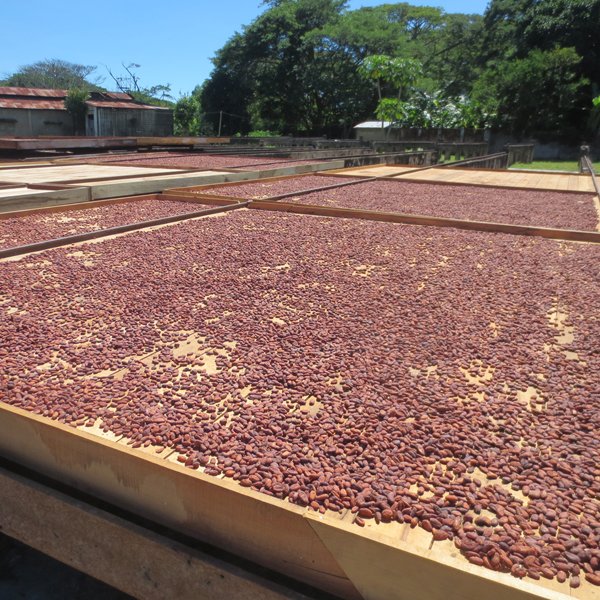
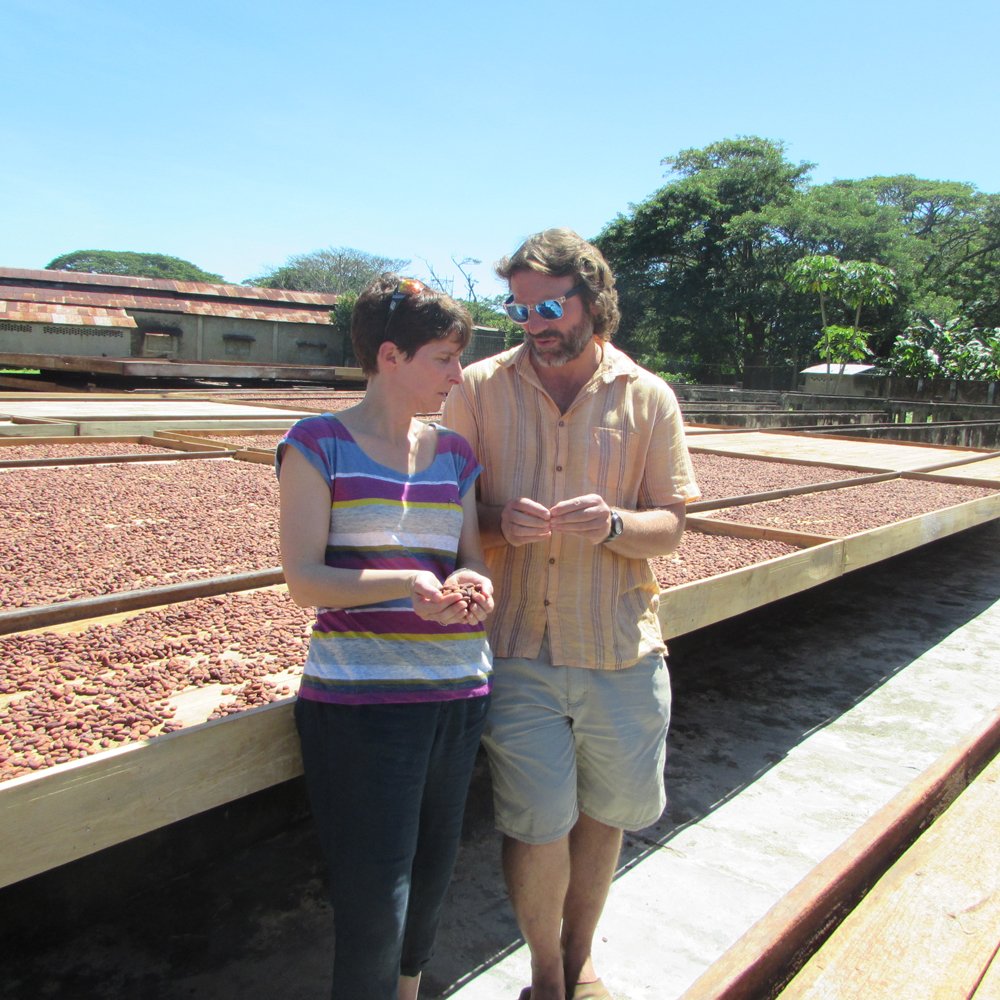
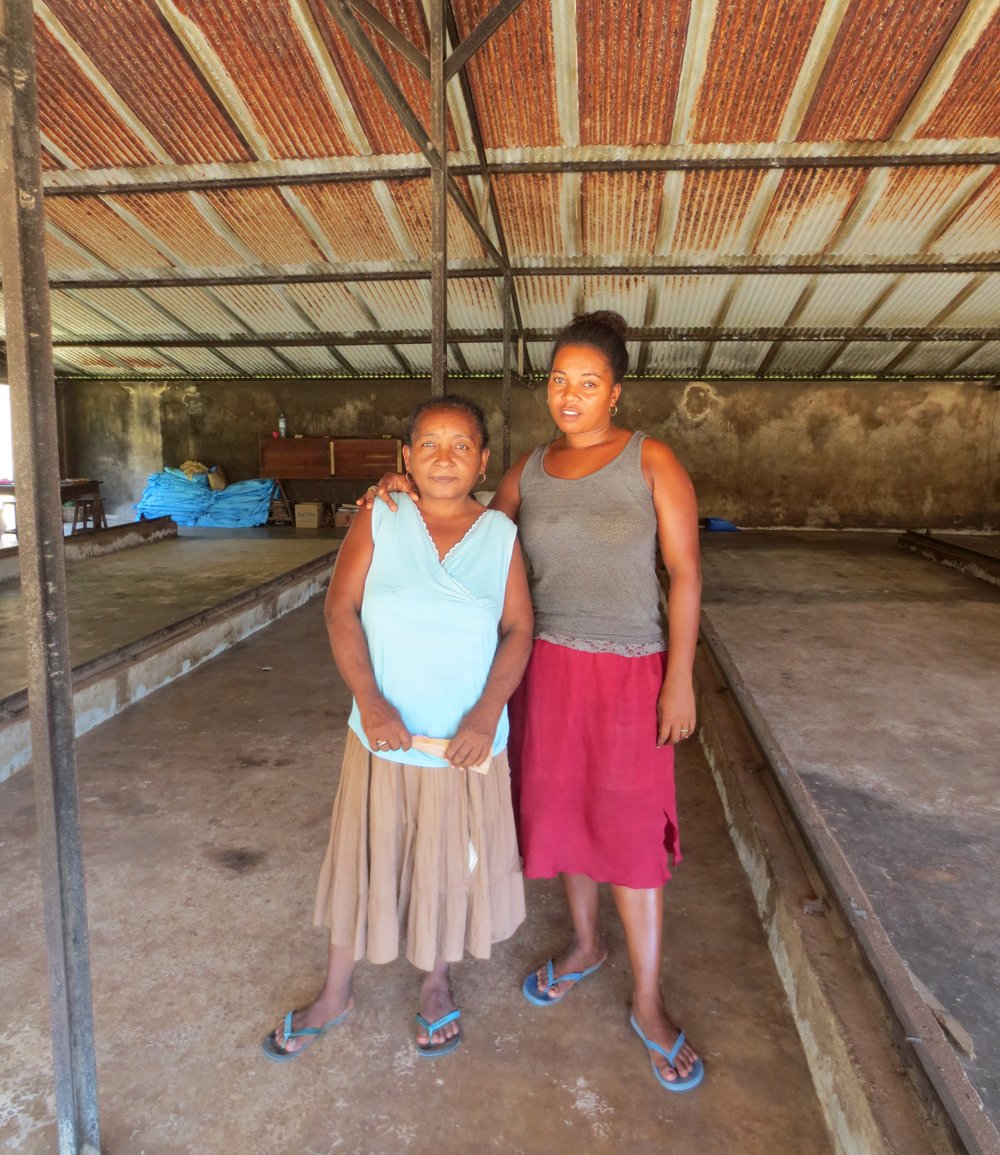
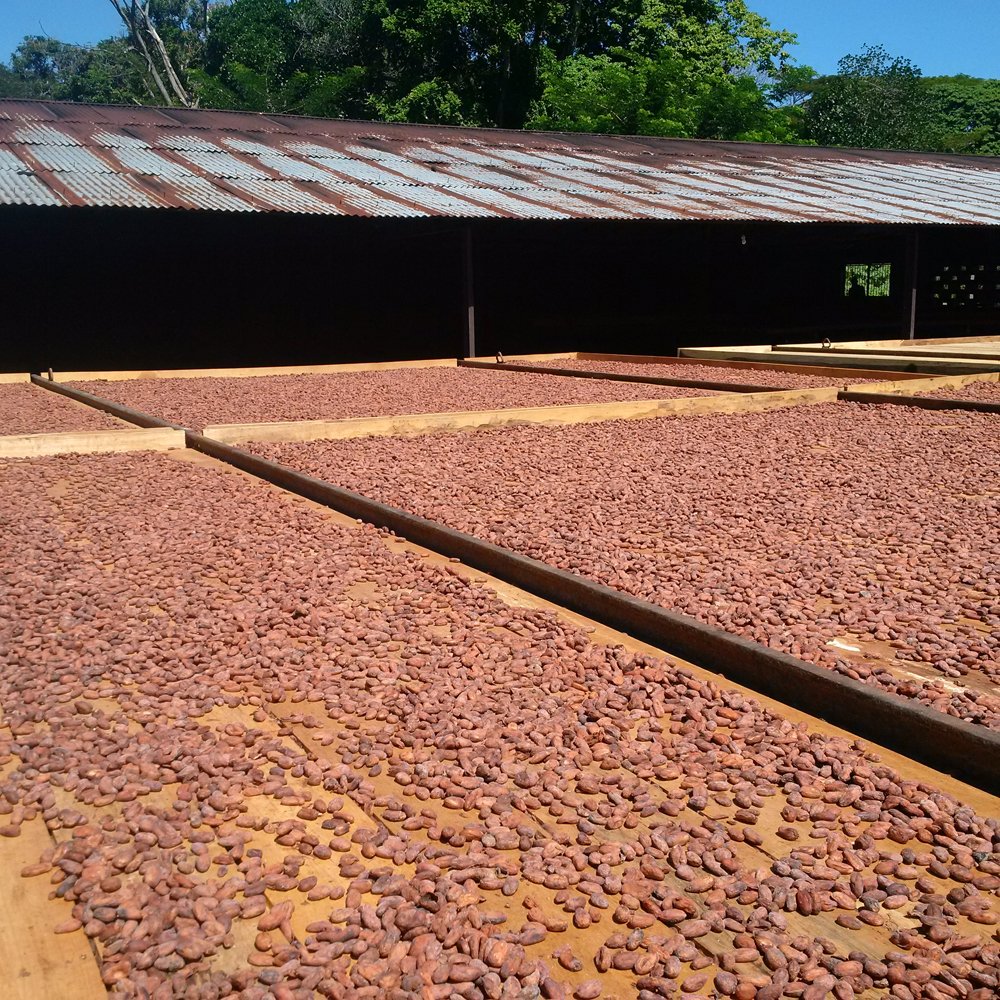
After drying, all the beans are sorted to remove any husks (the beans are attached to a central core when in the pod & that will get dried with the beans) before being bagged & stored ready for delivery by road (a long 15 hour drive on more bumpy roads) to the Chocolaterie Robert factory in Antananarivo. Meet Julie & her team of dried beans sorters - As with harvesting the pods, all this work is done by hand & we need to remember that when we expect chocolate to be cheap!
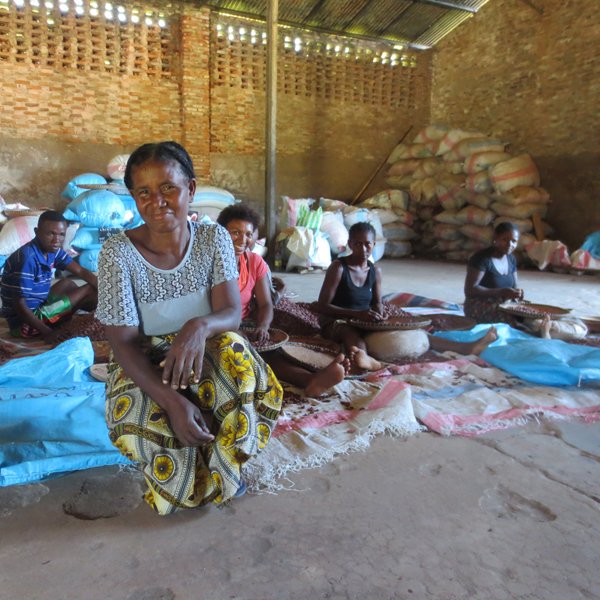
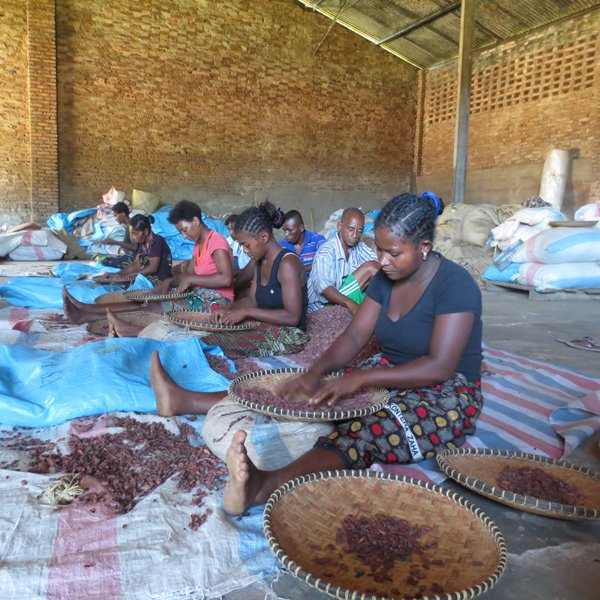
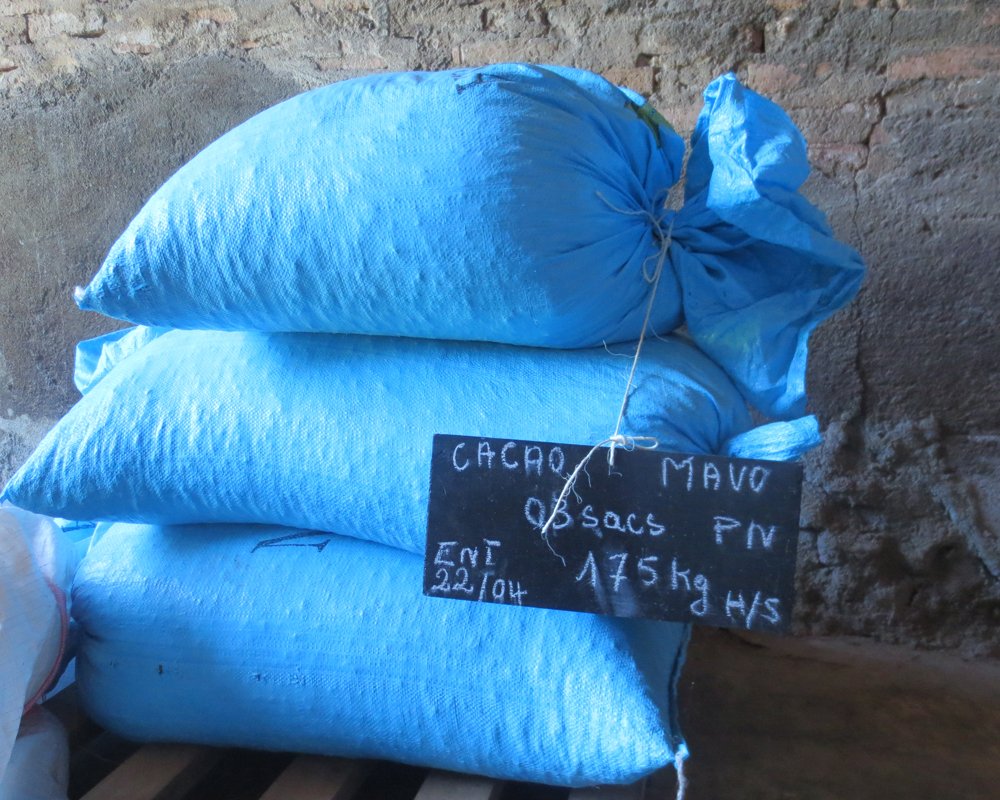
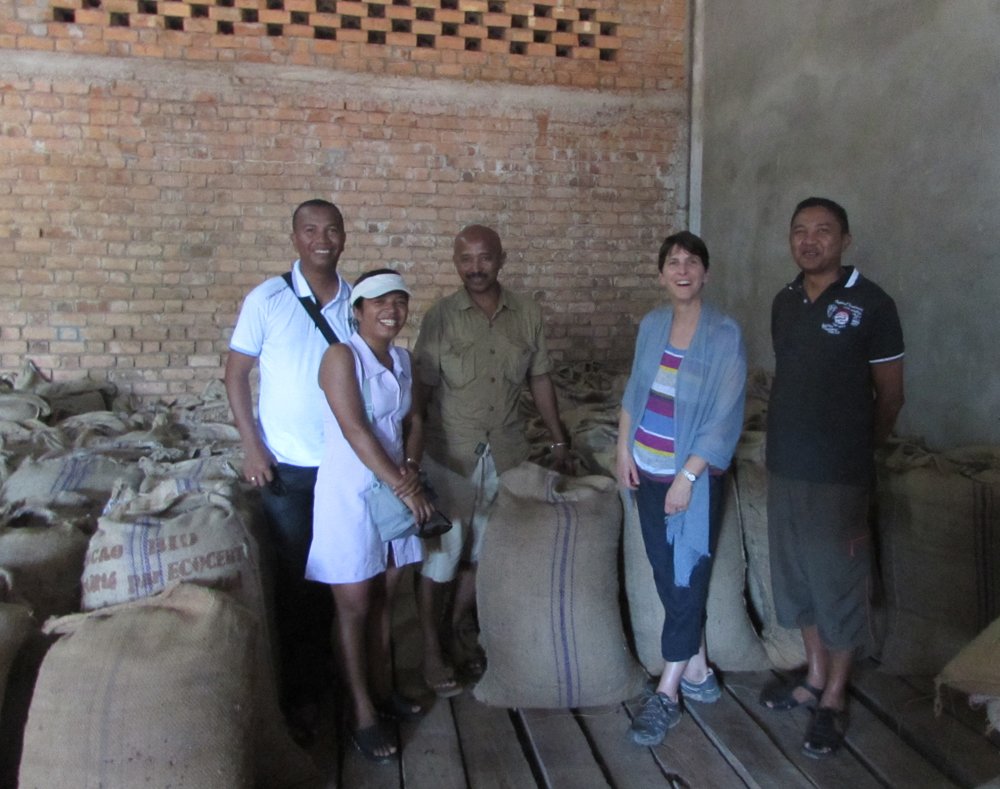
I brought a blue & jute cocoa sacks back with me too...look out for them on display in our Exeter chocolate house!
Finally, lets talk about child labour & pay rates - MAVA does not employ any children on the plantation and the workers are all paid at least the Madagascan minium wage & many are paid more. Farm workers also get access to an unusual benefit in kind...a paddy field, so that they can grow their own rice.
However, theft is an issue for all the cocoa plantations in the Sambirano area & they have to employ security guards to protect the cocoa. However sometimes thieves will steal pods at night and take with them unripe pods as well as they cannot see what they are doing in the dark. MAVA is starting to initiate projects including bringing running water to villages & helping to support the local communities further to help reduce the amount of theft that takes place on their plantation - I hope it works for them.
To see how these freshly dried cocoa beans are turned into chocolate at the Chocolaterie Robert factory in Antananarivo, read my Blog #3.